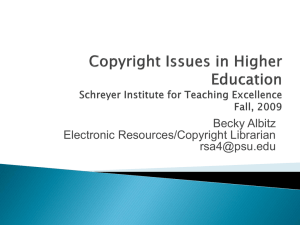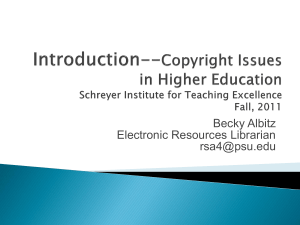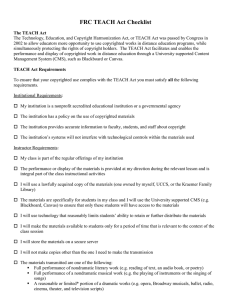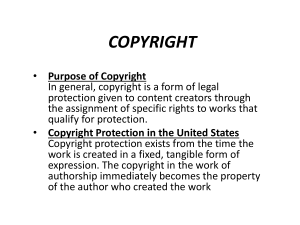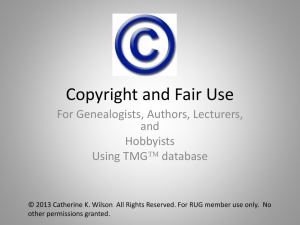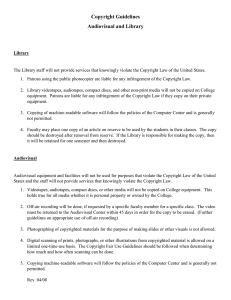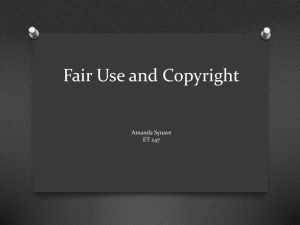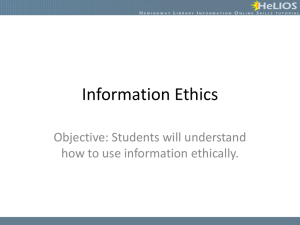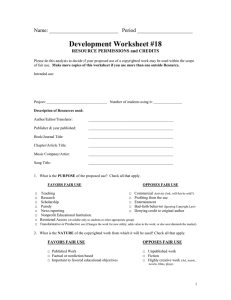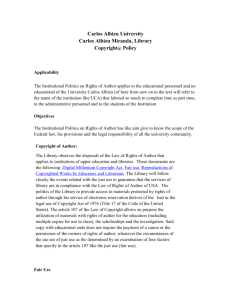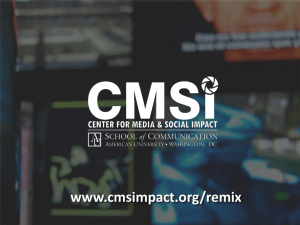Slides in Microsoft Word Format
advertisement
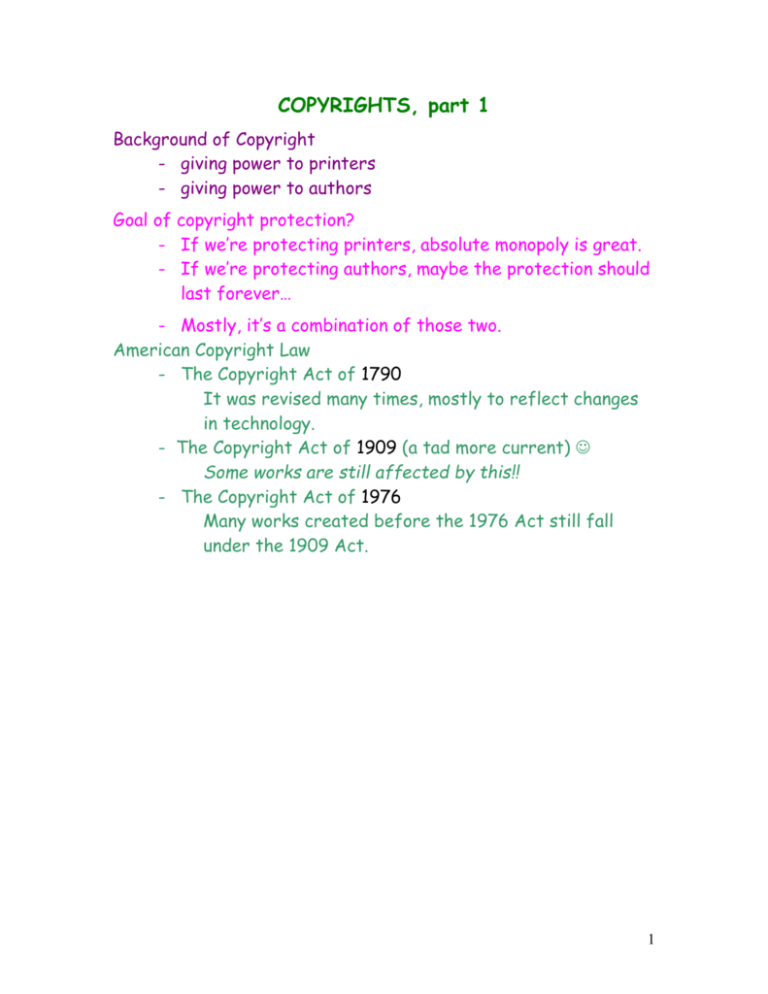
COPYRIGHTS, part 1 Background of Copyright - giving power to printers - giving power to authors Goal of copyright protection? - If we’re protecting printers, absolute monopoly is great. - If we’re protecting authors, maybe the protection should last forever… - Mostly, it’s a combination of those two. American Copyright Law - The Copyright Act of 1790 It was revised many times, mostly to reflect changes in technology. - The Copyright Act of 1909 (a tad more current) Some works are still affected by this!! - The Copyright Act of 1976 Many works created before the 1976 Act still fall under the 1909 Act. 1 COPYRIGHTS, part 2 The main concept underlying copyright protection is a very basic idea: preventing people from making copies of things without permission. It’s very difficult these days to prevent copying because we’ve gone far beyond books printed on paper. What should be protected is not the same as what the law actually protects. Very often it’s a matter of arguing that a particular form of expression constitutes a ‘work’ and should be protected! A moment to discuss citing: 17 USCS §117 United States Code (USC), Title 17, Section 117 We’re referring to the Copyright Act of 1976, which is codified in the United States Code, Title 17. We’ll just call it “Section 117” or “§117” 2 Distinguishing ©s from Rights in Other Property §202 the difference between owning a copyright and owning a chattel. Ex. Forward v. Thorogood, 985 F.2d 604. 3 COPYRIGHT LAW DOES NOT PROTECT IDEAS!! There’s a difference between intangible property and a mere idea. Ex. The idea of a song involving stuttering cannot be copyrighted. But the stuttering song itself, once it’s put into a tangible medium of expression? Buh-buh BAD to the Bone! Mu-mu-mu-MY Sharona! Quick differentiation: Copyright – ownership attaches as soon as you (for ex.) draw the picture on your paper, even if no one ever sees it. Register? Further protection. Trademark – mere creation doesn’t give protection, but public use does. Patent – must register! Then comes protection. If the application passes, the patent is granted. 4 What can be copyrighted? – part 1 §102(a) lists the works of authorship that can receive copyright protection: 1. literary works 2. musical works, including any accompanying words 3. dramatic works, including any accompanying music 4. pantomimes and choreographic works 5. pictorial, graphic, and sculptural works 6. motion pictures and other audiovisual works 7. sound recordings 8. architectural works You cannot protect an idea to build a structure with arches and towers and a moat and pillars, etc. but a drawing of this structure could be protected. 5 What can be copyrighted? – part 2 §101 provides definitions (ex. What is an “architectural work,” what is an “audiovisual work”) This section is very important because it is updated constantly. Rarely does federal law get updated as often as this section of the Copyright Act, but the more technology advances, the greater the need for explanation of the technology, and the regulation of that technology. §102 says that copyright protection with attach to an original work of authorship fixed in any tangible medium of expression. “Fixed…” – computer programs, live television broadcasts, live radio broadcasts… §113 talks about the scope of exclusive rights in pictorial, graphic, and sculptural works. Differentiating between statutes and a face, or some sort of picture, carved into the side of a building. 6 What can be copyrighted? – part 3 Characters – can they be protected? Possibility of characters being protected separately from (and in addition to) the movie/book/comic book in which they appear. Ex. Rocky Balboa, and the other characters (AdriAAAAAN!!!) in the movie can be protected under Copyright law in addition to (and separate from) the copyright in the story itself. In Walt Disney Productions v. Air Pirates, the court decided that the same is true for Mickey Mouse and Donald Duck. “A comic book character, which has physical as well as conceptual qualities, is more likely to contain some unique elements of expression,” and is therefore worthy of receiving copyright protection. Ex. Archie, Jughead, Veronica, Betty, Reggie Ex. Alvin, Simon, Theodore Ex. Harry, Ron, Hermione, Dumbledore, Hagrid 7
